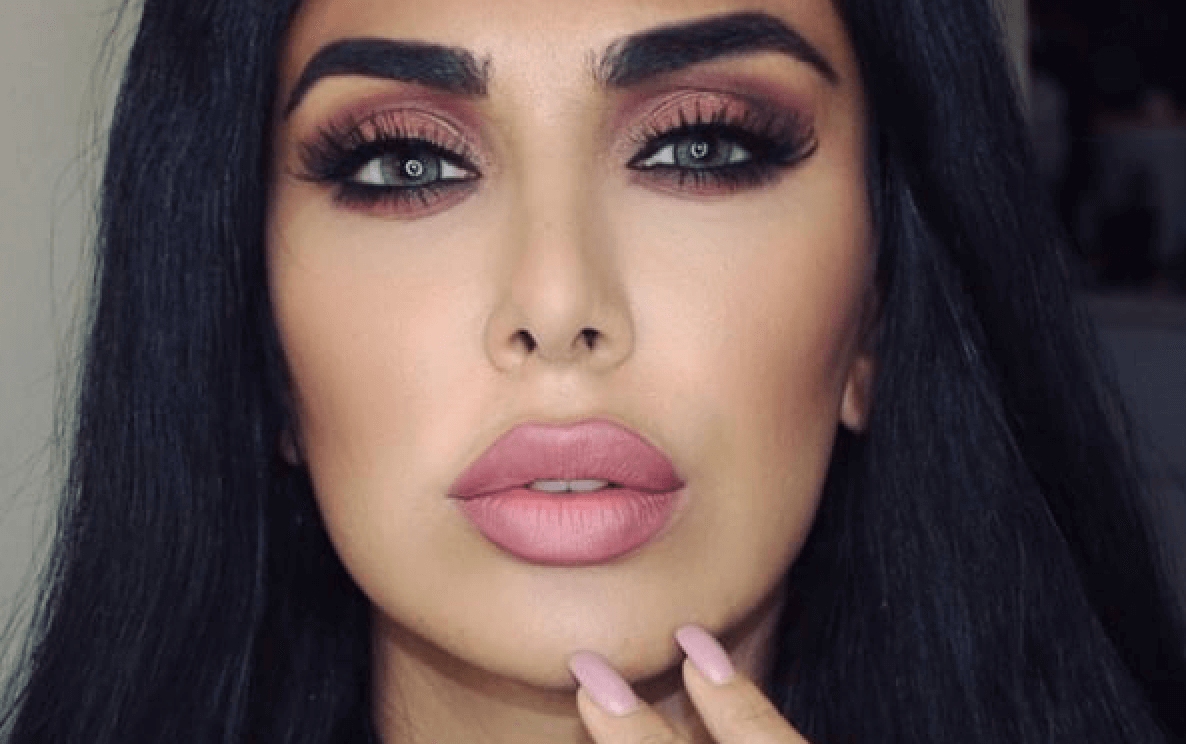The Secret To Keeping Lips Soft And Crack-Free

Winter tends to wreak havoc on pretty much every part of our body (and some would argue our souls, too). Hair gets flat and dull, skin loses that humidity-fueled luster, and lips feel cracked, dry, and sometimes even painful. So… what do we do? We subconsciously lick our lips on repeat in an attempt to infuse them with a little extra moisture, which only exacerbates the problem. And if that weren’t bad enough, some of the lip balms we liberally slather on top seem to also cause more damage than good.
What we’re trying to say is that you’re not alone in your dry lip woes or confusion. Today, though, we’re getting to the bottom of it once and for all.
What Causes Dry Winter Lips in the First Place?
 Source: Werayuth Tes/ Shutterstock
Source: Werayuth Tes/ Shutterstock
The thing about lips that makes them especially sensitive during cold, dry, winter months is that that they’re built differently compared to the rest of our skin.
“Lips generally do not have sebaceous glands, which are the oil glands associated with hair follicles that keep the skin moisturized and protected,” says Dr. Yunyoung Claire Chang, a board-certified cosmetic dermatologist at Union Square Laser Dermatology. “Because lips must stay moisturized on their own, the skin more easily becomes dry and chapped compared to other areas of our body.”
This problem becomes worse in the winter because of lower humidity (made inescapable due to indoor heating) and cold, blustery winds.
Yep, Licking Makes Dry Lips Worse
When we don’t have a good lip balm on hand, we tend to lick our lips frequently. This is a serious no-no, warns Dr. Chang.
“Excess saliva via lip licking can actually dry out the lips further. As the saliva evaporates, it takes moisture away,” she explains. “Repetitive lip licking can even cause ‘lip licker’s dermatitis,’ an irritant contact dermatitis around the lips characterized by redness and dryness around the lips.”
Other things that can exacerbate dry lips include sun exposure, picking at flakes or dry skin on/around lips, and over-exfoliating. As a rule, we should avoid licking, stay hydrated, and apply high-quality lip balms frequently.
Beware: Not All Lip Balms Are Worthy

Before we dive into what balms are best for healing and preventing dry lips, let’s first discuss the phenomenon of lip products that seem to make the problem worse. (No, you’re not imagining it!)
Poorly formulated lip balms that rely on humectants (e.g. glycerin, hyaluronic acid, propylene glycol) and don’t include occlusive emollients (e.g. beeswax, shea butter, lanolin jojoba oil) will only make your lips drier. This is because humectants ultimately pull moisture from the skin, which in turn evaporates. Humectants in lip balms can be effective, but only when married with occlusive emollients, which create a barrier over your lips to lock in moisture.
Posts You'll Love:
Other examples of subpar formulation include balms that are made with ingredients like menthol, phenol, and camphor. While these ingredients create a cooling or tingling sensation that’s immediately soothing, they’re ultimately drying you out.
Bottom line: your balm should have both humectants and occlusives, and immediate tingly relief isn’t always best.
Dermatologist-Recommended Products for Soft, Hydrated Lips
Now that you’re ready to toss the lip balms that aren’t working for you, let’s talk about some products that come highly recommended by skincare experts.

PCA Skin Peptide Lip Therapy: If you’re dealing with seriously damaged, dry lips, you need a product that’ll rescue you stat. It’s splurge-y, but PCA’s Peptide Lip Therapy, $28, is a top choice across the board. “It has shea butter, which softens the lips, and a peptide that stimulates collagen production to reduce the appearance of lip lines,” says Victoria Lewis, a medical aesthetician at NYC’s Tribeca Med Spa.
Blistex Medicated Lip Balm: It may not be as pretty as the others here, but Blistex Medicated Lip Balm, $3 for 3, is an inexpensive godsend that you can keep stashed everywhere. In addition to containing a blend of occlusive emollients, it boasts an SPF 15.
DedCool Rose Chazstick: For a balm that’ll give you at least a half year of soft, hydrated, never-painful lips, try DedCool’s Rose Chazstick, $18. It’s a chubby balm that’s made with all-vegan ingredients, including botanical waxes, shea butter, sesame seed oil, aloe oil, avocado oil, macadamia nut oil, and vitamin E. Also, it smells amazing.
Burt’s Bees Lip Balm: Burt’s Bees Lip Balm in Honey, $3, is another inexpensive find that actually delivers on its promises. It’s slightly sweet, just thick enough, not too glossy, and is reparative and soothing at the same time. There are other variations, but the honey version is a favorite.
Skinceuticals Antioxidant Lip Repair: Skinceuticals’ Antioxidant Lip Repair, $38, is meant to be used as a complement to your favorite lip balm. “This potent treatment helps fight the signs environmental damage while smoothing and rehydrating the lip surface,” says Lewis. “It also helps attract and retain water to rejuvenate, reshape and replenish lip tissue.”
DIY Lip Treatments
Natural ingredients found in your own kitchen can be useful, too, notes Dr. Jason Emer, a cosmetic dermatologist and recurrent guest on The Doctors. “You can easily make your own homemade lip balm out of coconut oil or flaxseed oil, which are both filled with essential fatty acids,” he notes. Other ingredients he recommends are honey, shea butter, beeswax, botanical waxes, almond oil, and vitamin E. Pro-tip: if you make your balm with wax and/or shea butter it’ll harden and be easier to tote and apply.
If you’ve got questions about dry lips, shout out and we’ll holler back!




















Leave a comment